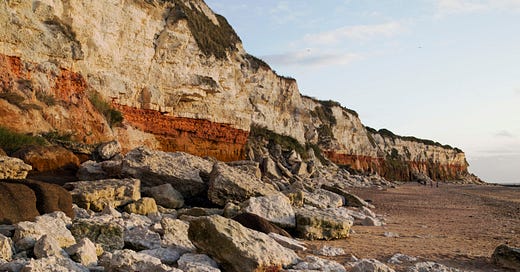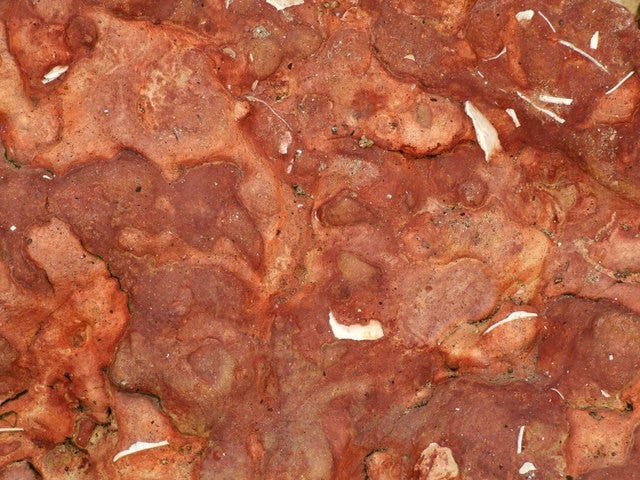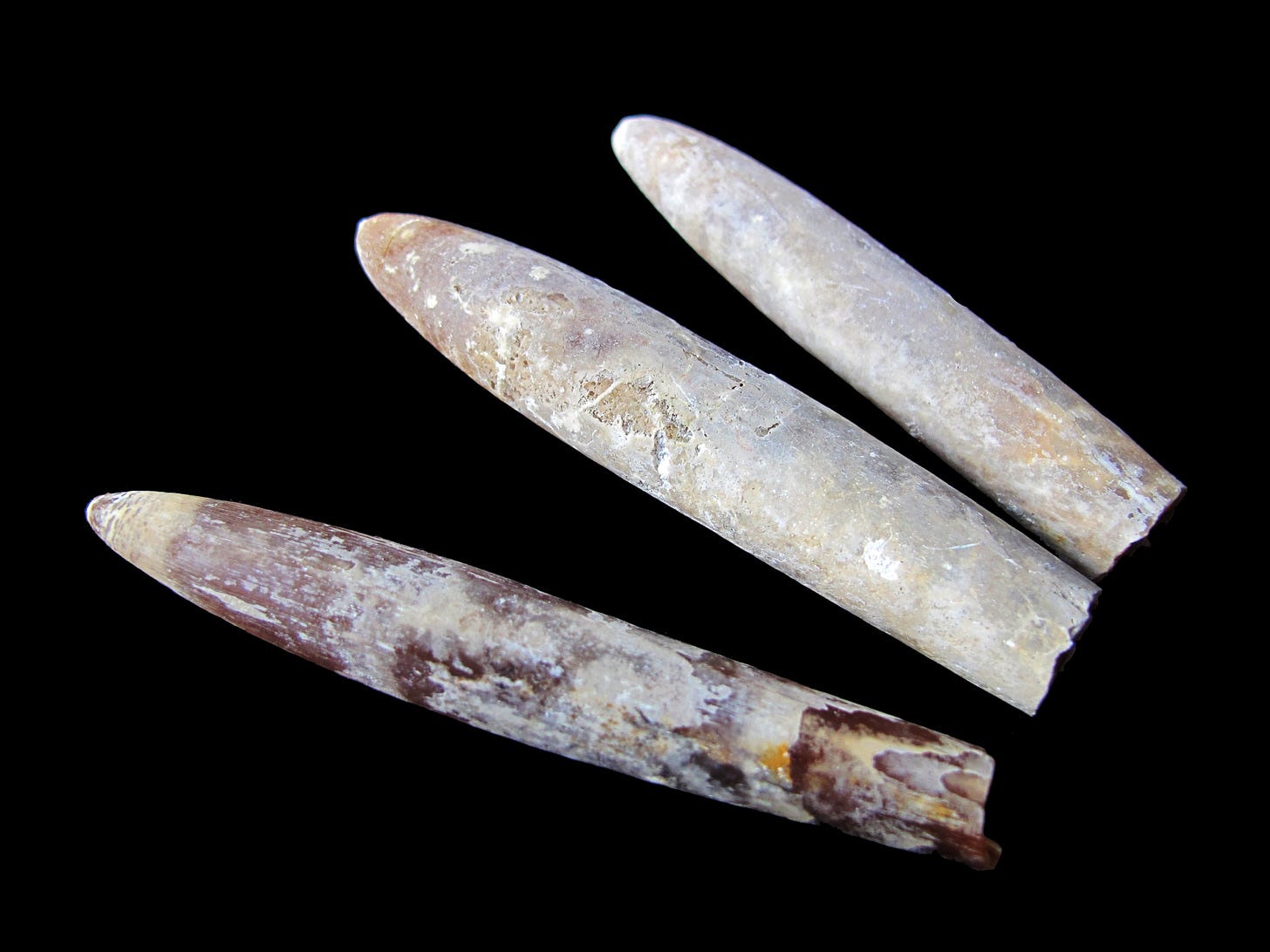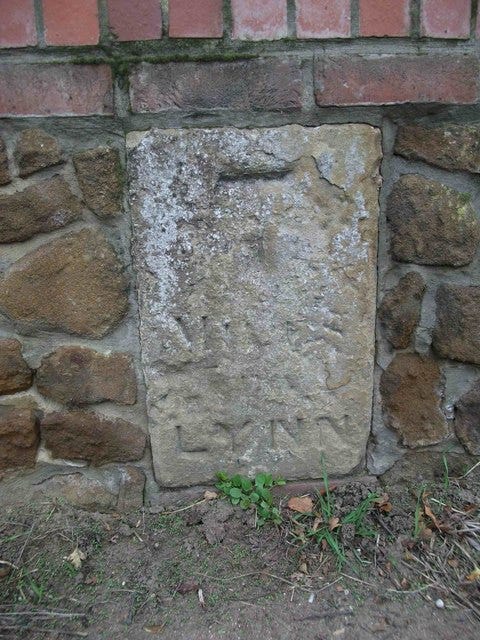Hunstanton cliffs. Geological Bakery At Its Finest (Shutterstock)
I’ve never really been into the ‘bucket list’ thing.
Making a list of all the things you want to do or places you want to visit before making our way into next world-where, presumably, they might all be immediately and easily accessible anyway?
No. If I have a new experience of any kind in the next one, two, five, ten years. Then great. But I won’t miss what I haven’t had in that time.
However. If you twisted my arm and said I absolutely had to nominate three places in the world where I’d really like to visit, I’d list them as follows;
The Grand Canyon
Mount Etna
Niagara Falls
See the connection? Natural wonders with a bit of a geological leaning. You can, I’m afraid, keep all the big cities and city attractions, I’m more for a natural wonder or seven.
With the Grand Canyon topping the list.
My interest in Geology was sparked, rather too many years ago, by a school field trip to the cliffs at Hunstanton.
I’d been brought up in a village and area of coast where mud, creeks and sand dunes were the dominant feature of my surroundings.
Brancaster marsh. Nowhere better to be on a summers evening when the tide is coming in (Shutterstock)
So to realise that there was, and within a short distance of my home, a place where the land didn’t so much melt into the sea but abruptly, and in a relatively spectacular manner, suddenly and without any warning, stopped was quite a revelation.
That was it. I was hooked.
The geology at Hunstanton cliffs is, if you take time out to study it, rather more complicated than it immediately looks. However, on a fundamental level, there are three layers of precious geology to look at here, starting at the base of the cliffs with the red chalk, its distinct colour coming from the iron pigments that have, over time, imbued it with that rather fiery look.
It has nothing to do with volcanoes and volcanic activity of course, the rocks here are all sedimentary in nature, laid down, in layers over millions of years but, what makes this particular layer interesting is the rich variety of fossils that can easily be found in it, including belemnites and, if you’re very lucky, ammonites.
Red chalk at Hunstanton with embedded bits of shell (Dave Hitchborne/geograph)
You don’t need to risk life and limb hacking away at the cliff face itself either, just cast your keenest eye over the debris that lies on the sand and away from the cliffs themselves and, sooner than later, you’ll almost certainly come across a belemnite fossil.
Belemnite fossils. From around 200 million years ago )Shutterstock)
They don’t look much, I’ll admit. Especially if you’re a fan of the Jurassic Park films (and please, they are not based on scientific fact any more than The Smurfs was) or have witnessed ‘Dippy’, the Natural History Museum’s famous Diplodocus skeleton (except its a cast, not the original fossil) up close and personal.
But come on, how can finding one not generate a WOW! factor? These are the fossilised remains of a creature that swam in our warm and life affirming oceans tens of millions of years ago. If the thought of that doesn’t give you goose pimples, well….
Sitting atop the red chalk at Hunstanton is a layer of white chalk, made up of the fossilised remains of billions of minute sea creatures that once made up the deepest of sea beds with, atop that, the layer of brown Carrstone, or Norfolk Carrstone, a type of sandstone that was formed much later on than its two chalky predecessors in the Cretaceous, rather than Jurassic eras.
It is used extensively as a building stone and, if you live locally or in and around Bedfordshire or Cambridgeshire, there is every chance that there may be a house or two in your community that has Carrstone in its walls.
A milestone near to King’s Lynn that is surrounded and supported by Carrstone (the Milestone Society/geograph)
Take note of the sign, if you please (Ray Sullivan/geograph)
Hunstanton’s cliffs will never, of course, excite and attract the curious visitor in the same way that some of the countries more well known geological features might. But that doesn’t mean they don’t have enormous geological significance, because they do, providing, in a sharp and very visual way, a simple and absorbing introduction to a fascinating area of study.
Give them another look sometime. You never know, you may end up with the remains of a Velociraptor’s distant ancestor in your pocket…










Had no idea you were into geology Ed. Me too! The Norfolk Geology Society run some great talks and field trips. Norfolk geology is more interesting than you’d think.
Hi Kathy, thankyou. Looking back even further in time, I remember the gravel quarry at Brancaster Common fascinated me as well & spent many hours there, accompanied by the resident Sand Martins!